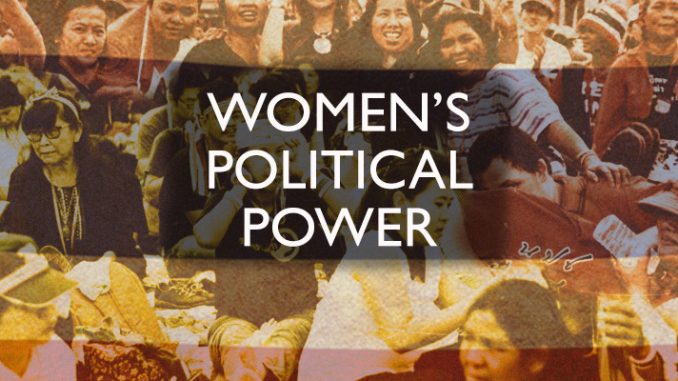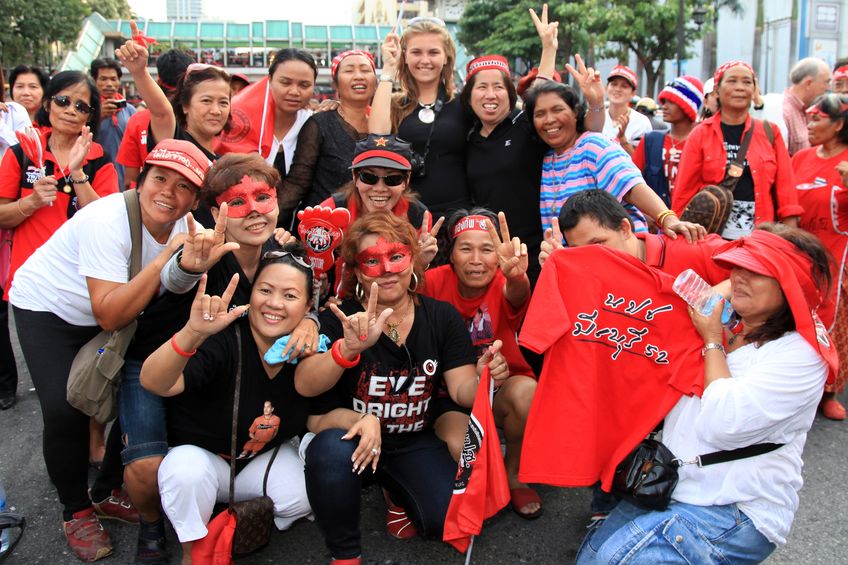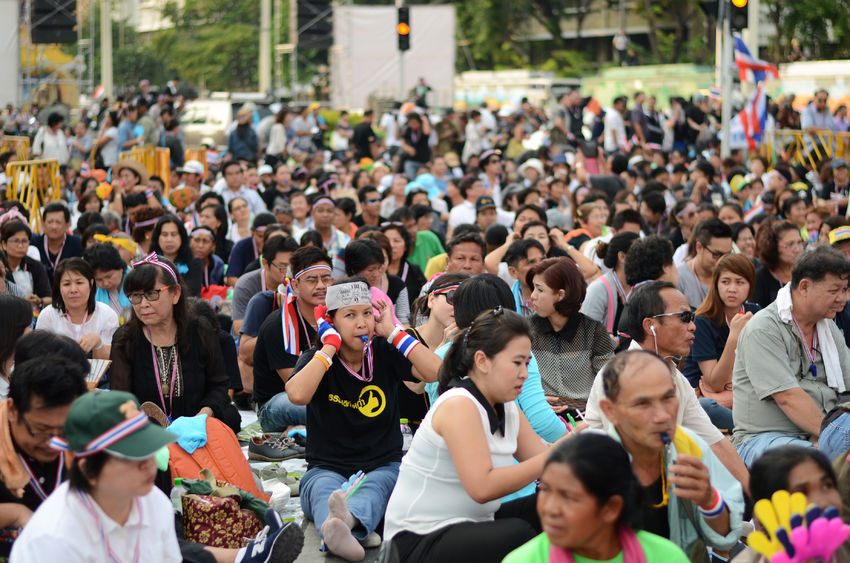
This article derived from a dissertation entitled “Women’s New Political Space in Thailand: A Case Study of the Red and Yellow Shirt Movements”, which set out to explore the extent of women’s participation in the Red and Yellow Shirt Movements in Thailand during the period of the vibrant protests (2006 – 2014). 1 The selected subject of the study was women, from both political camps, who had entered the political avenue since the beginning of the colour-coded movements. They are from a wide range of backgrounds in terms of education, religion, economic status, social status, occupation and domicile. They are a diverse group, standing in contrast to the prevailing assumption that low-income rural women to be on the Red Shirt side and urban middle-class women to be on the Yellow Shirt side. The study conducted with awareness that women are not the same, and not a monolithic group, resulted in discovery of a wide-ranging picture of women’s participation in political movements.
The study argues that the colour-coded political conflict has enhanced the quality and the extent of women’s participation in Thai political life. Empirically, the study suggests that the political space opened by these movements offers opportunities and resources for women to create new political spaces that increase the potential of women to influence social movements and their political agendas.
The colour-coded movements have provided greater scope to accommodate the needs and interests of women from different backgrounds, through political engagement in various forms. Firstly, they provide a vehicle for politics in promoting women’s space in the political realm by forming groups to promote equality and equity in political participation. Although they did not have a stated gender agenda for gender equality, women’s groups did have a positive impact on their male counterparts’ perceptions of women’s capabilities. Thanks to the flexibility of political space within the social movement, women can create political groupings without resistance, while at the same time maintaining partnerships with their political allies.

Secondly, some women, particular at the grassroots, believe in the legitimacy of movement politics since it served as a means to monitor and make political institutions and politicians responsive to people’s demands and interests. The apprenticeship gained from their political participation allowed them to exercise meaningful political activism including challenging the agendas of their political camps. Women, both from the grassroots and upper classes, have thus been able to transcend the public-private divide by emphasising the discourse of the common good and upholding the nation’s values, while gaining recognition from their respective organisations. This group of women, who believe in legitimacy of movement politics and refuged social movement as source of power, had engaged in politics in order to claim a fairer distribution of resources by the state. Their involvement in the social movement paved the way for their further involvement in community affairs. In order to realise political goals, women could stand firm as legitimate citizens with rights, and feel justified in negotiating with the government in order to have a say in its policies and projects.
Finally, for some women who were movement coordinators and leaders at the provincial and national levels, participating in social movement provided them with the opportunity to develop their constituency, and paved their way to electoral politics. Gradually over time, women accumulated the necessary capabilities and assets (e.g. knowledge, skill, confidence, trust, mass-based support and networks) for transforming power relations. This made it possible for them to shift their position in the political terrain, and to organise the expansion of the boundary of their political actions. They moved from the periphery (first as participant and then as leader of social movement) to the centre (as elected representatives) of political power. This has changed power relations with the state.
Socialisation in movement politics has cultivated women’s political competence and creativity. Individually and collectively, women have developed their role through their involvement in the protests as “members and participants” to becoming “political actors”. The recognition of women’s image as political actors has resulted in an increase in their authority and ability to have political influence within the colour-coded movement and their local political communities.

The study of the Red and Yellow Shirt movements suggests and reaffirms that gender awareness is not generated by women’s organisations or feminist networks alone. These movements do not necessarily have a stated gender agenda, yet gender dynamics which occur, in the enabling environments of Thai political conflict, do act to promote women’s political participation. Essentially, gender-mixed movements have increased gender awareness among men by offering them first-hand experience of being active with women who are engaged in politics, and with women who are effective, constructive, knowledgeable and skilful. These women were not limited by the illusion of the public and private divide. They were able to dismantle ill-gendered relations in a non-confrontational manner. Women could then realise their new political roles and power to create an alternative political space without men’s adversarial resistance. This has led to new forms of partnership between women and men. As a result, there are more opportunities for women and men, to combat social problems, share their experiences and knowledge of political interventions, and redress inequalities of political power. Indirectly, this also serves to redress gender inequality as women’s new political influence can contribute to changing the old political paradigm that had left women out of politics and favoured men in its allocation of benefits.
It is true that the process of claiming and creating political spaces discovered in this study cannot be realised by any woman who wants to repeat the political path of the few. Each case is different, and the factors which hinder the process are strong. Amongst the main obstacles, are: first, the attachment to authority figures, second, the gender norms and stereotypes, and third, the limitation of opportunity. The first and second barriers might not be easy to tackle as they are embedded in the people’s mindset. However, the third obstacle is considered more likely to weaken as this research has found that women can engage in politics in a more meaningful way by gaining political opportunity and socialising with politicians and political activists through their participation with movement politics. Awareness of these obstacles would help us identify what needs to be imparted so that women can be empowered to sustain change. There is still the need for resources, effort and support both from women themselves and other people including other political agents coming from movement and electoral politics.
Duanghathai Buranajaroenkij
Ph.D. Candidate of Gender and Development Studies, AIT
Lecturer at Institute of Human Rights and Peace Studies, Mahidol University
YAV, Issue 20, Kyoto Review of Southeast Asia. November 2016
Notes:
- The author would like to express her acknowledging appreciation to the government of Japan for a scholarship grant and to her adviser, Assoc. Dr. Philippe Doneys and a co-adviser, Prof. Dr. Kyoko Kusakabe for their insightful and inspiring guidance. ↩
